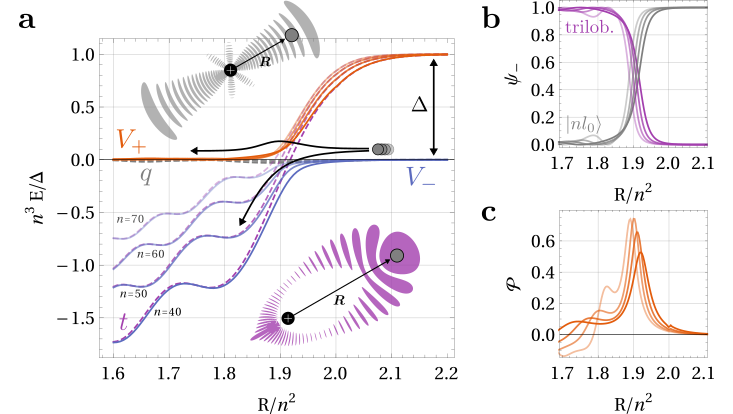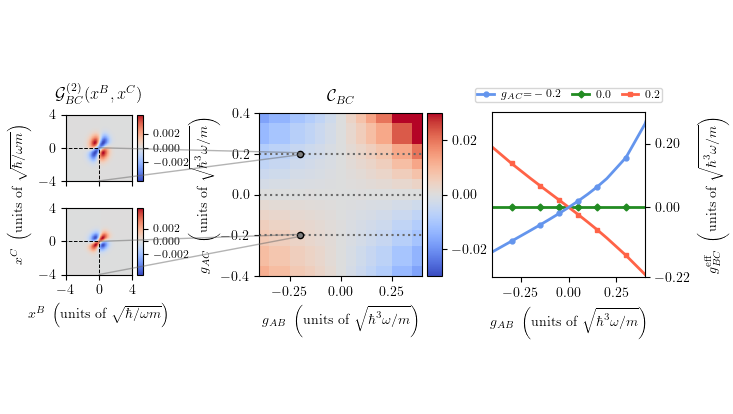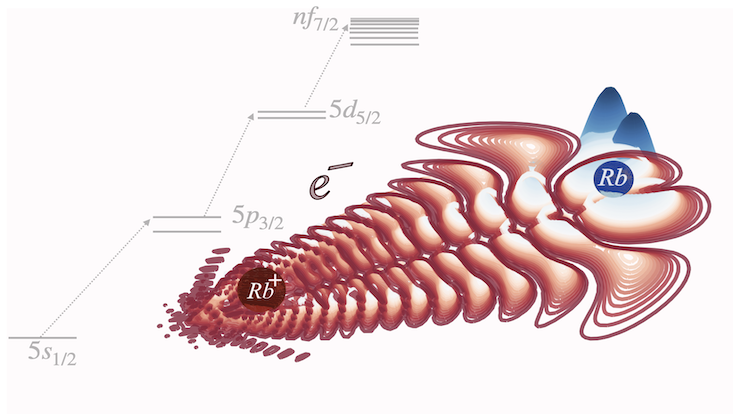Quantum Physics
Ultrafast radiationless transitions of Rydberg atoms and vibrational dynamics of Rydberg molecules
19 February 2021

Photo: AG Schmelcher
Rydberg atoms embody versatile tools for ultracold gas experiments, quantum optics, and quantum simulation with neutral atoms. Researchers from the University of Hamburg and the Max Planck Institute for the Physics of Complex Systems in Dresden have studied the interplay of Rydberg atoms and ground-state atoms. At huge internuclear distances, the characteristic Born-Oppenheimer potentials feature conical intersections, such that ultrafast changes of electronic angular momentum occur, a process that can be controlled via the principle quantum number n. Furthermore, quantum dynamics calculations of vibrational bound states in these potentials that lead to ultra-long-range Rydberg molecules are established.
The von Neumann-Wigner theorem prohibits the crossing of potential energy curves in diatomic systems: Varying the single interatomic parameter R leads only to avoided crossings. Considering a Rydberg atom, its high density of states, and the corresponding oscillatory electronic wave functions, counterintuitively allows to circumvent this theorem employing the principle quantum number n as a second synthetic parameter. In fact, conical intersections, where two potentials become degenerate in a single point R0 can be found at specific principle quantum numbers ni. Here, the dominating decay mechanism of the Rydberg atom, rapid changes of electronic angular momentum l, is strongly suppressed below the radiative lifetime. This effect is general for alkaline and alkaline-earth elements and crucial for the preparation of circular Rydberg states, where l=n-1.
The Born-Oppenheimer potential energy curves additionally provide vibrational bound states corresponding to ultra-long-range Rydberg molecules with huge bond lengths on the order of thousands of Bohr radii and dipole moments exceeding those of ground-state molecules by 3 orders of magnitude. Researchers at the University of Hamburg have established and employed tools to study the quantum vibrational dynamics of these molecules allowing for beyond-Born Oppenheimer effects such as vibronic couplings. In a first example, they present the dynamics of a trilobite molecule after quenches of an external magnetic field. This allows the preparation of rotating molecules as well as large amplitude oscillations of the internuclear distance. Furthermore, the molecule may also be prepared in a superposition of two distinct molecular geometries differing by hundreds of Bohr radii. The theoretical framework allows to examine exotic and novel molecular effects and provide guidance for state-of-the-art experiments.
Publications
F. Hummel, M. Eiles, and P. Schmelcher
Physical Review Letters 127, 023003 (2021)
F. Hummel, K. Keiler, and P. Schmelcher


